










 SUDESH KISSUN sudeshk@ruralnews.co.nz
SUDESH KISSUN sudeshk@ruralnews.co.nz
SOME FARMERS are taking on additional work off farm to keep up with rising interest costs, says Federated Farmers dairy chair Richard McIntyre.

He points out that while the price of some farm inputs such as nitrogen fertiliser, fuel and palm kernel expeller (PKE) are starting to ease, there is still a lot of stress amongst farmers, particularly those with higher levels of debt.
“Many have come off fixed interest rates and the significantly higher interest payments are really starting to bite,” he told Dairy News
“We are hearing of farmers beginning to take on additional work off farm to keep up with their rising interest costs.”
McIntyre warns that any drop in the milk price will exacerbate the problem.
His comments came as economists review their forecast milk price for the season following another drop in Global Dairy Trade (GDP) price index.

Westpac senior agri economist Nathan Penny says there are now clear downside risks to its ambitious 2023-24 milk price forecast of
WHEN DAIRY prices are down, it’s normally linked to oversupply of products but global milk supply isn’t the problem this time.
ANZ agri economist Susan Kilsby says global milk supplies have been growing at a very modest pace over the past 12 months, so additional milk has not been the catalyst for the weaker prices.
“Looking forward, global milk supplies are likely to tighten further
$8.90/kgMS.
“As a result, our forecast is under review,” he says.
Penny says the downward price trend is clear and has been sustained much longer than expected, with overall prices falling at 10 of the 14 auctions held this year.
“And overall and whole milk
powder (WMP) prices are down 22% and 17% in annual change terms. In contrast, we had expected that prices would have bottomed by now, if not begun to turn higher.”
Penny says the chief catalyst for the ongoing price decline is the sluggish Chinese economy.
ANZ agri economist Susan Kilsby believes that prices will not materially increase before a large proportion of the current season’s supply is traded.

“What is clear is that consumer demand is being impacted by weaker economic conditions in many regions.
“Most economies are still growing, albeit at a considerably slower pace than normal, which is taking a toll on dairy demand,” says Kilsby.
“The softer demand from China is having the largest impact, as China is by far the world’s largest importer of dairy products.”
Kilsby expects the Chinese market to remain relatively weak for some time yet, but as milk supplies tighten, prices should improve later in the season.
as the low milk prices result in less feed inputs, particularly in countries where cows are housed and therefore feed is their major operating cost.
“There are already anecdotal reports of smaller farms going out of business, particularly in regions where the cost of producing milk is very high, such as China.
“Therefore, over the next 12 months we could actually see a fall
in global milk supplies,” Kilsby says. New Zealand’s milk output is generally trending lower.
There will continue to be significant seasonal variations, given pasture production is largely determined by the weather, Kilsby notes.
“El Nino is forecast to occur this year, which could deliver a long, hot summer. That would curb dairy production, particularly in non-irrigated regions,” she says.
Kilsby says the bank is now forecasting a milk price of $7.75/kgMS for the season, a drop of 50c. Fonterra is forecasting a price range of $7.25 to $8.75 for the season.
McIntyre says it is concerning to see that banks are reducing their forecast milk price.
However, it’s the processors’ forecasts and the resulting change to the advance rates that will have the biggest impact, he warns.
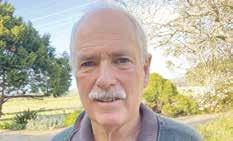
WHEN IT comes to sustainability, everyone on a dairy farm has a part to play, according to the new chair of DairyNZ’s Dairy Environment Leaders (DEL), Amber Carpenter.
Carpenter says collaboration is important on farm, between the farm owner, sharemilker or contract milker.
“Your role may differ from someone else’s, however, each role is important,” she told Dairy News
“Together we can make a big impact for positive change. We are all in this together and overall the outcomes affect everyone.”
She points out that as a farm owner, working in collaboration with a sharemilker or contract milker helps with the overall goals of the farm.
“This includes discussing production goals and other goals that you are working together to achieve including environmental sustainability.
“Talking about and being aligned on the farm’s overall environmental goals helps keep everyone on track and understand what the targets are – and what it takes to meet them.”
Carpenter and her husband Fraser are sharemilkers on a Paparimu dairy farm, milking 450 cows. The couple put a plan in place every season to lower their environmental footprint, such as reducing nitrogen and fertiliser inputs, as well as imported feed.

Carpenter says looking after the environment has always been important to them.
“Working with farm owners who also value environmental sustainability is important to us and we appreciate working with farm owners on Farm Environment Plans
and being involved in the conversations when it comes to planting and fencing off wetlands.
“As sharemilkers we work with what is in our control. Understanding our numbers is key.
“We put a plan in place every season to lower our environmental footprint, such as reducing nitrogen and fertiliser inputs, as well as imported feed.”
Over the last five seasons on the Paparimu farm, the couple have spent a lot of time working with their farm consultant, doing comprehensive reporting to

work out what the optimum herd size would be there.
This reduced the herd size by 100 cows, leading to a lower stock rate, lower imported feed use, and lower nitrogen use, all contributing to cows better fed with homegrown feed, without impacting production.
Carpenter says the small changes each day and each season help make a bigger overall impact.
Current farm owners Craig and Kathy Maxwell, along with Kathy’s father Neville Markwick, share the same values as
the couple when it comes to environmental sustainability.
She says over the past couple of years they and the farm owners have done a lot of work with fencing off waterways and regenerative planting.
The end of last year saw 5700 native plants planted to restore and create a wetland on farm with 5000 plants still to go.
Carpenter believes the most important environmental issue farmers are facing is climate change.
“That means reducing our footprint but also farming through the
AMBER CARPENTER has been involved with DEL for the past two years.
What she loves about the DEL network is the opportunity to be in the room with like-minded people that share that sense of community, to share ideas, to be educated, to hear different viewpoints or challenges others are up against.
It’s also a great opportunity to collaborate and most importantly to make a positive impact – whether it is on your own farm or in your community, she says.
DEL is a DairyNZ-supported farmer initiative launched 14 years ago and now involves 400 dairy farmer members nationwide, who work with dairy farmers, communities and decision-makers to drive positive environmental progress. DEL has a focus on sharing the sector’s great work and leading by example, in reducing the environmental footprint.
Carpenter says New Zealand dairy farmers are world-leaders and have the lowest footprint for onfarm milk production.
“And we are constantly working hard to reduce our footprint while running successful farm businesses.
“But yes, there is still work to be done and, like everyone, continuing to reduce our environmental footprint is important for many reasons. For dairy farmers, this includes remaining competitive on the international market and keeping our value proposition as sustainable milk producers.
“We want to keep up with consumer demands but also to sustain the future of our environment for generations to come. We are already feeling the effects of climate change so the work we continue to do each day is securing a future for our industry and our grandchildren.”
effects climate change is having currently with the increase in frequency and intensity of weather events.
“How we farm today will not be how we farm tomorrow, however, that shouldn’t be some-
thing we are afraid of. The work we are doing is important and necessary.
“We have challenges ahead of us but with these challenges I see great opportunity –especially if we all work together.”
ASPIRING ACT MP and former Federated Farmers president Andrew Hoggard says Labour killing off plans to introduce a wealth tax was a no brainer.
He says ACT is diametrically opposed to such a tax which he says would have disproportionally hit farmers at a time when they are already struggling. He says such a tax would have been a cruel move because it would have hit farmers in Hawke’s Bay and Gisborne who have been struggling to get back on their feet after Cyclone Gabrielle and other adverse weather events.
“These people are already suffering from stress and a loss of income and the impact on them would be terri-
ble,” he says. Hoggard says any wealth tax would capture most farming operations as well as some people in urban areas.

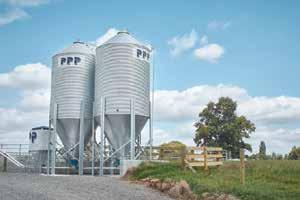
Meanwhile, earlier this month, Hoggard and ACT MPs Mark Cameron and Nicole McKee were touring a number a of small towns throughout the
country in what they are describing as a ‘heartland tour’ – places that Hoggard says don’t usually get a political event from the major parties.
He says while the events were sort of aimed at farmers, they attracted a wide range of people from the rural communities and attendances have

been good. Hoggard says, for example, they had 100 people at Rongotea in the Manawatū, 100 in Timaru and 125 at Moutere with the average attendance being around 50.
“But what’s interesting is that we thought farmers may want to talk about farming stuff, but no – it’s the big issues

FORMER PARLIAMENT speaker and diplomat Sir Lockwood Smith is the new chair of the Riddett institute.
The institute is a CoRE or Centre for Research Excellence, headquartered on the Massey University campus in Palmerston North. It is the country’s premier national centre for fundamental and strategic scientific research
in food science and novel food processing. It employs leading scientists from a number from research institutes within NZ and overseas.
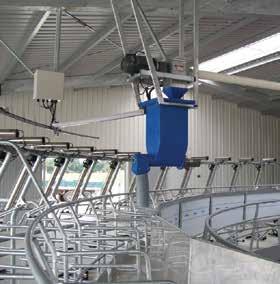
Smith replaces Stuart McCutcheon, who passed away suddenly at the beginning of 2023.
Smith says the new board role reflects his interest in sci-
ence and his enthusiasm for the work of the Riddet Institute in food science. He says science is particularly important as our food industry is grounded in evidence-based nutritional research.
“What worries me today is that science is now being downplayed more and more. People desperately need high standards in food research, to ensure the
such as crime, the cost of living, education, and cogovernance.
“Issues that are affecting the whole country and the people who came to our meetings are worried about these,” he says.
Hoggard says this gives weight to the notion that people are worried about the direction the country is heading in.
He says his colleague Cameron who comes from Northland says that school attendance in that region is low. He says only 27% of students regularly attend school and the long-term implications of this are very worrying.
Hoggard says being on the campaign trail has been exciting and interesting, but he has one suggestion for future governments about the timing of an election.
“Don’t hold them during calving time,” he says.
science of food advances in the best way for the best outcomes for future populations. This is where the Riddett Institute work is so valuable,” he says. He says the Riddet Institute has an international reputation and a high profile that is well deserved, and he is looking forward to supporting its work through his role as board chair.
FORMER FONTERRA
Kelvin Wickham takes over as Ballance AgriNutrients chief executive in September.
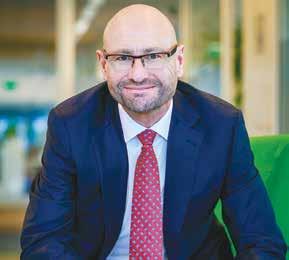
A 34-year veteran with Fonterra, Wickham retired last year from the co-op as head of business activities across Africa, Middle East, Europe, North Asia, and the Americas, along with global oversight of the Active Living Functional Nutritional Unit and the NZMP brand.
Prior to that he was responsible for the business unit NZMP, the biggest dairy ingredients selling and marketing entity in the world. He has lived in Shanghai where he led Fonterra’s Greater China business across the full value chain
from farms to brands. In an earlier supplier and external relations role, he worked closely with farmer shareholders, with responsibility for Fonterra’s farmer facing teams as well as engaging with key New Zealand government and external stakeholders.
Wickham says he’s grateful for the opportunity to lead Ballance which plays an important role in New Zealand’s economic engine.
“We have a strong foundation, as a pioneering food-producing nation built on the innovation and resilience of our farmers and growers.
“It is important to me that we harness the opportunities of global customers and consum-
ers for our communities at home in a way that ensures we have a sustainable, prosperous food and fibre value chain throughout the world,” says Wickham.
Ballance chair Duncan Coull says Wickham’s appointment reflects the
board’s ongoing commitment for Ballance to be fit for purpose in a fastevolving world.
“Kelvin’s wide-reaching experience in the marketplace, his passion for innovation, strong focus on people and driving performance will
ensure the co-operative is well placed to serve the needs of our customers and shareholders into the future,” says Coull.
Wickham will replace Mark Wynne, who steps down at the annual general meeting after nine years in the role.
“I want to take this opportunity to thank Mark Wynne once again for his leadership of Ballance. His efforts and dedication have resulted in long-term achievements that have significantly and positively impacted the growth and sustainability of the business and the food and fibre sector,” says Coull.
“Mark will be missed by the Ballance team, and we wish him all the very best for the future.”
MANAWATU FARMER Raewyn Hills is the new chair of New Zealand Dairy Industry Awards national committee.
Hills has been a national committee member since 2019 and is a long-time supporter of the awards.
With husband Michael, she won the Manawatū Farm Manager of the Year title in 2013 and she is currently an equity partner milking 850 cows plus dry stock alongside her husband.
“We were involved with the Awards programme as entrants before progressing to hold various roles within the Manawatū regional committee and for the past three years I have been the national dairy trainee team leader,” says Hills.
“The Awards have been a journey of growth since first entering.
“Through the Awards programme, you gain so much satisfaction watching others grow and go on their own journey of progression through the dairy industry,” she says.
“I have so much enthusiasm for the Awards programme, working alongside many others who make the Awards possible and ensuring the programme remains relevant, creating connections and providing value to our entrants throughout the various stages of their careers.”
NZDIA Trust chair Richard McIntyre farewelled outgoing chair Amber Carpenter and thanked her for her dedication, time and passion for the Awards over the years.
FRANKLY, THE DR200SE IS A BIT OF A LEGEND. It’s a straight-up, rugged and reliable bike that’s been a firm favourite of Kiwi farmers for over 30 years. And with five hundy knocked off for a limited time, it’s great value and available from your local Suzuki dealer now.

density while reducing greenhouse gasses.”
Farmers won’t agree to soft options, he says.
TWENTY THREE
years on from founding the iconic company Herd Homes, Whangarei farmer Tom Pow still strongly believes that farming smarter rather than reducing stock numbers is New Zealand’s answer to reducing greenhouse gas emissions.
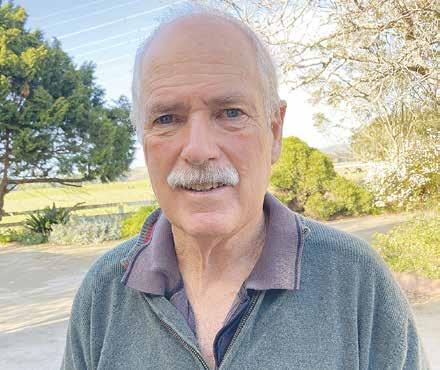
Pow says the claim by some commentators that more cows will cause more greenhouse gas emissions is “a myth”.
“This is another area where our industry has been too weak and gullible,” Pow told Dairy News.
“We as farmers need to set the standards and conditions to go forward: get our farming scientists and advisers to increase production and stocking
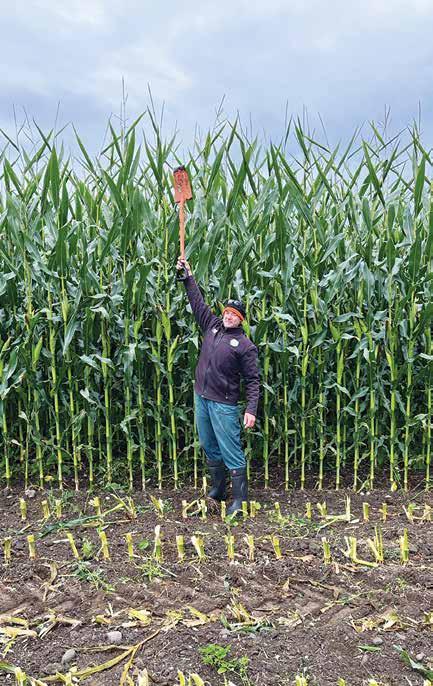
Pow says, when he invented the Herd Homes system with his wife Kathy, it was designed to meet or surpass current and future compliance demands and help generate greater returns.
“This is not just a green coating but a whole new method of farming,” he says.
Before that, they tried all the conventional management options for alleviating the distress of cows and loss of production: sacrifice paddocks, wintering barns, standoff areas and feed pads with concrete, metal, chip, or sawdust.
Some of these measures overcame pugging problems but they were dissatisfied with them all as answers to the prob-
lems of dairying on low lying, heavy clay soils with buckets of rainfall.
They discovered the major reason for under performance of cows was exposure and lack of shelter.
Pow designed Herd Homes as a system to meet environmental and welfare demands while improving productivity.
He says getting cows off wet paddocks means effluent and urine are not
12 robust silage specific hybrids with proven results in New Zealand.
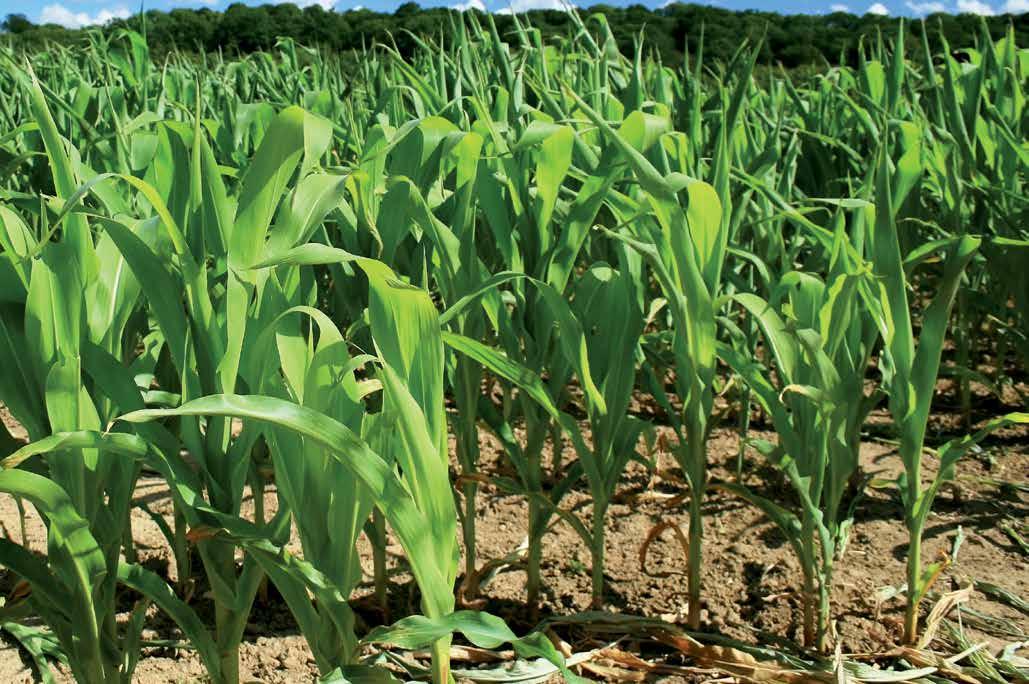
All seed is treated and packaged in New Zealand. High digestibility numbers with proven results in the milk tank.
Amazing palatability and storability using EDGETM technology.
FLEXIBLE FIBER means that BRIXXTM makes high quality feed when you need it.
easily leached into soil and waterways.
“Cows in the Herd Homes shelter have the dung and urine stored in basement bunkers, out of harm from rain, or flooding.”
Herd Homes allows effluent to be stored under the shelter and recycled as a valuable farm nutrient.
“It starts with what home-grown crops would give the farmer the best yield and financial increase while using the effluent stored in Herd Homes as the fertiliser.
“Many older farms have farmed with or seen what natural cow manure and urine can do on their own farms, known as the wool shed block or the cowshed block.
“Now you can have the whole farm growing like that and no compliance problems.
“No fertiliser is as cheap as the captured effluent in the Herd Home basement. It’s already on your property, so there’s no cartage costs.”
Pow says another ben-
efit of the shelter is that it helps preventing overgrazing.
“The more grass leaves left on paddocks, the more sunshine the plant can absorb. What follows is then the need of more mouths to eat the extra pasture grown.”
He says cows are trained to eat supplements while in Herd Homes. This would make it easier for farmers to introduce methane inhibitors to their cows.
Pow believes there’s no need to reduce cow numbers.
“The idea that dumbing down farms to a point so low that farming is dying is as stupid as believing that just one silver bullet will be the answer. No, it will be a way of farming with many options – the stepchange group of options will come.”
TIME’S RUNNING out for New Zealand to make critical decisions that will help us to win the race between climate change and climate change adaptation, according to leading water research engineer, Dr John Bright.
“We need decisive action now to protect our role as a reliable food exporting nation. This means putting at least as much effort into adapting to inevitable climate change as we put into reducing carbon emissions,” Bright says.
His comments are backed up by the Climate Economic and Fiscal Assessment 2023 Treasury Report on the impacts of climate change. The report highlights, amongst other things, the vulnerability of the agricultural sector and opportunities facing the horticultural sector.
The wide-ranging report says New Zealand’s economy is resilient and well placed to weather climate change, but Dr Bright believes we need decisive action now so we can take advantage of climate change.
Bright, who is Director of Research and Development at Aqualinc Research, says that New Zealand stands to gain hugely from increased demand for horticultural food exports, but our existing rural water supplies just aren’t up to the challenge.
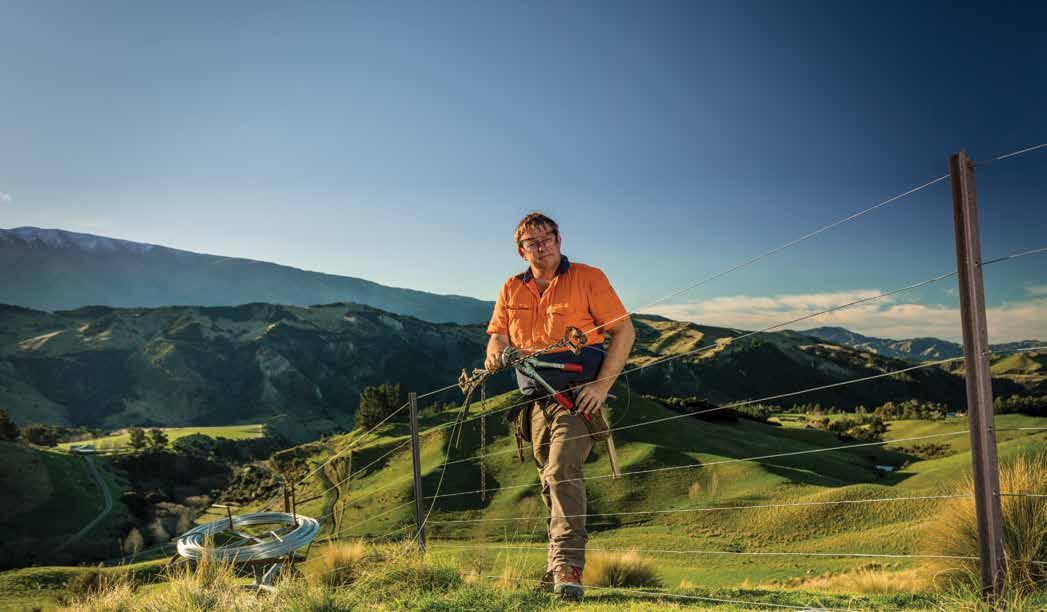

“New Zealand has lots of water, it’s just not available in the right places at the right time. We can do as much as we like to try and improve irrigation efficiency, but on its own that won’t be enough to match supply with demand in the face of climate change. To
maximise future export revenue, we need a level of water supply reliability that can only be achieved with well-planned water storage,” according to Bright.
“There’s no time to lose. We need to start now, with well informed decisions about the water storage we’ll need as our climate changes. Then
we need to build that water storage – and that could take 20 years from concept design to water supply.
“The race is on, with climate change modelling suggesting significant shifts in water flow and demand over the next 20 years. We can’t afford to delay.”
Bright acknowledges
that large scale water storage is controversial, with locations, consents, finance and design barriers standing in the way of progress.
“There are already several water storage projects that have failed because too much time and money was spent too soon on detailed dam engineering. More attention to planning might have shown that less storage volume was needed than was first thought.”
Bright’s company Aqualinc has a long history of innovation and excellence in its applied water and soil research for clients, as well as its resource consultancy work with farmers, irrigation schemes, central and local government.
“We use our water and soil research combined with our knowledge of farming practices to help
government agencies develop good water and land management policies. Then we help the water users gain or retain access to water and use it efficiently and profitably.
“Our research focuses on problem solving, and clearly the biggest problem right now is the escalating speed of climate change. I can’t stress enough how important it is for New Zealand to focus more on water storage. We need decisive action now or we will be locked in to pasturebased land uses which can cope with water supply variations and miss the opportunity to expand higher value land uses,” Bright says.
Aqualinc’s current research focus is on groundwater allocation in Canterbury.
“The focus until now has been on what we can
see – which is surface water – and that is traditionally where science and research funding has been invested.
“Much less is known about groundwater, but we are gradually finding out how important it is that we manage it properly. As groundwater availability reduces, demand for surface water increases, and that will lead to the need for more water storage as water supply reliability becomes a bigger issue,” Bright says.
“We need to know more about how groundwater will behave as our climate changes, so we can manage it better in future,” he says.
“The race is on, and we need to act now to secure our future,” Bright says.
@dairy_news
facebook.com/dairynews
EUROPEAN DAIRY co-operative
Arla Foods is eyeing a fibre-based cap for its milk cartons.

Arla claims this could be a first in the dairy industry and would reduce its plastic consumption by more than 500 tonnes annually if implemented.

The dairy cooperative is teaming up with Blue Ocean Closures in a formal partnership to create fibre-based caps.
The cardboard milk carton is a well-known classic in several countries and while the packaging has undergone several transformations over the years, it is now a near-optimal choice in terms of food safety and sustainability.
But Arla says the time has come to completely rethink a small yet significant part; the cap.
Making up around 235t of the plastic used in Arla’s cartons, the farmer-owned dairy cooperative has now set its sights on the caps as part of its sustainable packaging strategy to eliminate use of fossil-based virgin plastic in its packaging by 2030. Arla Foods is partnering with Swedish start-up Blue Ocean Closures to create a solution that could see the dairy cooperative introduce the first fibre-based cap on milk cartons in the industry.
“Improving our packaging, including reducing our use of plastic, is imperative to us and we know that consumers are also very invested in this area. This project to explore what could very well be the first fibre-based cap on milk cartons is very excit-
ing and shows that we at Arla are constantly looking to improve and lead the transformation of sustainable packaging”, says chief commercial officer at Arla Foods
Peter Giørtz-Carlsen.
The cap has a body made of sustainably sourced FSC fibre material combined with a thin barrier coating.
Using advanced, proprietary vacuum press forming, this allows for a cap that is biobased, ocean biodegradable and recyclable as paper.
Blue Ocean chief executive Lars Sandberg says it is working with Arla to create a real difference in packaging sustainability.
“With increased fibre content, the solution will increase recyclability, starting in Scandina-
via and paving the way for global change.”
With funding from Arla Foods, the plan is now to develop a fully functional prototype and complete the testing phase by start of next year. With the cap responsible for 23% of the total plastic used for Arla’s milk cartons, it is natural to ask why the dairy cooperative is not removing the cap altogether. Arla did in fact do that on its Danish organic range back in 2020 but it was not without criticism from consumers unhappy with the loss of convenience.
Arla Foods uses milk cartons in several markets including Denmark, Sweden and Netherlands.
MILKING IT understands the new Olam milk plant in Tokoroa is running slightly behind schedule.
Scheduled to start processing around this time, we understand the company is already picking up milk from some farmers who have switched their supply over to the newest processor in Waikato.
However, until the plant is on line, this milk is currently being processed by another processor.
Olam’s entry has intensified competition for milk supply in southern Waikato where Fonterra is battling to hold onto its market share.
IS IT time for the Government to re-look at regulations pertaining to the sale of raw milk?
In recent weeks, several New Zealand raw milk sellers have been forced to recall their products due to fears they may contain either listeria or campylobacter.
The milk was sold via home deliveries, in one-litre glass bottles, and classified as raw (unpasteurised) drinking milk.
Farmers can sell raw drinking milk directly to consumers, either at their farm or by home delivery. Farmers, depot operators, and transporters of raw milk need to meet certain requirements to minimise risks to public health.
Rules for producing and selling raw drinking milk are set by the Ministry for Primary Industries. Time to tighten up those rules?
THE ELEVATION of former Feds leader Andrew Hoggard to number 5 on the ACT Party list puts the Manawatū farmer in pole position to be in a National/ACT cabinet, postelection.
With recent polling putting National/ACT ahead of Labour/ Greens, Hoggard could end up as the Minister for Agriculture and Trade in a Chris Luxon-led government.
While some may call this wishful thinking this early, having the former Feds president as ag minister could cause quite the stir in the Beehive.
Hoggard’s popularity among New Zealand farmers and his international profile is such that, if he got the job, it could give the farming sector a real confidence boost.
ACT’S RECENT ‘rural heartland’ odyssey has shed some interesting new light on what issues concern voters in the provinces.
One might have thought that rising farm input costs, lower export product prices and regulation might have been front and centre to put to politicians. It could be argued that these are still festering sores for farmers or that they have given up complaining, feeling their calls for help will fall on deaf ears or get misinterpreted by nonfarming officials.
But if you accept former Feds leader and ACT candidate Andrew Hoggard’s observations of the meetings that he and his colleagues have run in the smaller rural towns, then the urbanrural divide is something of a myth. The fact that crime, cost of living (and that would include inflation) and education – not to mention co-governance – are tops for them is insightful.
WHILE AUTHORITIES in New Zealand take their time to decide if a feed supplement promising to slash a cow’s methane output should enter the New Zealand market, other countries are giving the green light to farmers to use it.
Research has found Bovaer can reduce a cow’s methane output by 30% in non-pasture cattle. Fonterra also announced it would team up with DSM to trial the product in early 2021.
While officials blame Covid and the high number of other applications for the delay, politicians are pointing out that the waiting is costing the industry. Bovaer has now been cleared in more than 45 countries, with Paraguay the most recent. Bovaer, developed by Dutch animal health firm DSM, first applied in February 2021 for Environmental Protection Authority (EPA) approval in NZ. DSM is no doubt hoping that a positive ruling is imminent.
People of all ages in all parts of the country are feeling the pinch and desperately searching for someone or some organisation to change this.
The election is seen as the pathway to change, be it a new government or new policies by the existing administration.
The high price of fruit and vegetables is an issue no matter where you live, yet let’s remember that a crop failure every seven or so years is the norm and prices go up as supply dwindles.
Also, as a nation we are hooked on eating out of season, meaning we expect tomatoes and other fruit and vegetables to be at the same low price year-round and that simply isn’t possible. The Europeans eat seasonally – we don’t.
But that still does not take away from the fact that people in rural areas are as worried about the big national issues as those in urban areas. Rural crime gets little mention in the media, yet it affects people’s lives and businesses.
Or are the messages from the people who attended the ACT meetings a direct result of the widespread media coverage of crime and other societal ills? There are other sensitive issues in the mix as well.
Perhaps the most interesting number in the current polls is the number of undecided voters – people looking for answers which have not been given. Which party is leading in the current polls is interesting, but what will be more defining is when the number of undecided voters decreases and how these are apportioned.
And of course, how will rural NZ vote!
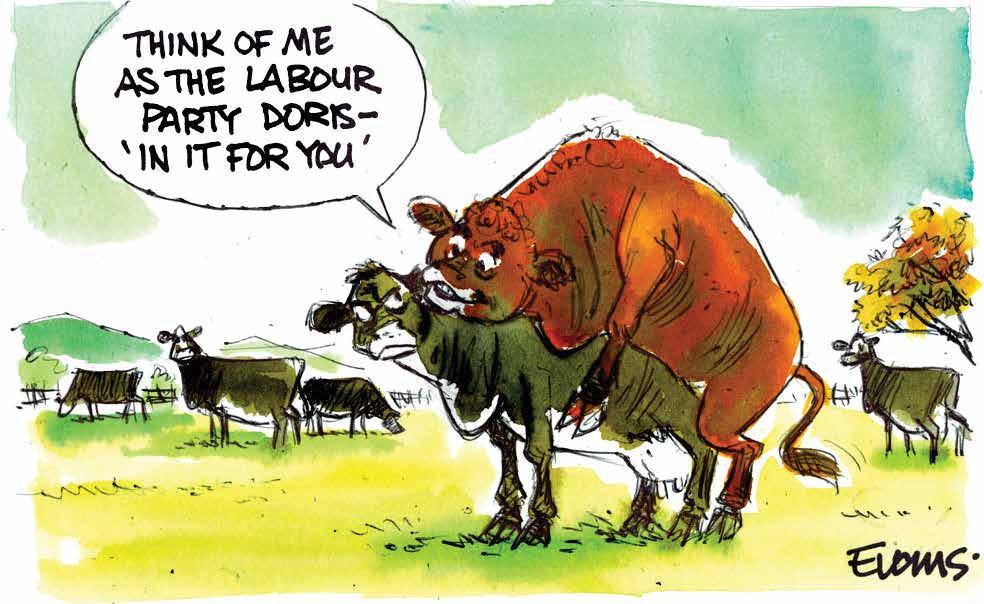
Head Office: Lower Ground Floor, 29 Northcroft St, Takapuna, Auckland 0622 Phone 09-307 0399.
Publisher: Brian Hight Ph 09-307 0399
General Manager: Adam Fricker Ph 021-842 226
Editor: Sudesh Kissun Ph 021-963 177
Machinery Editor: Mark Daniel Ph 021-906 723 markd@ruralnews.co.nz
Reporters: Peter Burke Ph 021-224 2184 peterb@ruralnews.co.nz
Subscriptions: Julie Beech Ph 021-190 3144
Production: Dave Ferguson Ph 027-272 5372
Becky Williams Ph 021-100 4831 Digital Strategist: Jessica Marshall Ph 021 0232 6446
AUCKLAND SALES REPRESENTATIVE: Stephen Pollard Ph 021-963 166 stephenp@ruralnews.co.nz
WAIKATO SALES REPRESENTATIVE: Lisa Wise Ph 027-369 9218 lisaw@ruralnews.co.nz
WELLINGTON SALES REPRESENTATIVE: Ron Mackay Ph 021-453 914 ronm@ruralnews.co.nz
SOUTH ISLAND SALES REPRESENTATIVE: Kaye Sutherland Ph 021-221 1994 kayes@ruralnews.co.nz
mary industries around the world and using open data to innovate.
THE FUTURE of agricultural innovation is reliant on the sector being more open with its data.

This was my key message at a panel discussion I was invited to participate in at the National Agricultural Fieldays in Hamilton by the NZ Institute of Primary Industry Management.
Open, or freely available, data would help
Trust Alliance New Zealand (TANZ) is working with open data to help make the primary sector more transparent, efficient, and sustainable. Its Data Hub is a repository of open data related to the primary sector. Its Digital Farm Environment Plan project is developing a digital platform that will allow farmers to share their environmental data
agricultural sector. Open data has the potential to transform the agricultural sector. The future of agricultural innovation is reliant on open data.
@dairy_news facebook.com/dairynews

farmers to collaborate with each other and other stakeholders in the agricultural sector. Such collaboration could lead to the development of new technologies and practices that would benefit the entire sector.
Open data can provide farmers with the information they need to make better, data-led, decisions about crop planting, fertilising, animal health, pest control, and many other aspects of their operations.
Using open data to benchmark would enable the sector to make more data-led decisions and allow improvements in operations, yields, and environmental impact.
The New Zealand transport sector has done both things by sharing its data through the world’s first national transport quality assurance tool, Transport Insights, built by Company-X.

Open data can be used to track the environmental impact of agriculture. This information can be used to develop more sustainable agricultural practices, such as reducing the use of pesticides and fertilisers.
At a higher, industry-wide, level open data could help farmers identify new markets.
Plenty of organisations are interfacing with pri-
with other stakeholders, such as government agencies and retailers. Its Digital Wallet project is developing a secure and convenient way for farmers to store and share their data.
The Food and Agricul ture Organisation of the United Nations Sustainable Agriculture and Rural Development Knowledge Platform provides open data on a variety of sustainable agriculture topics. Its Aquastat database provides open data and is also being used to track data on water use in agriculture. This information can be used to develop more efficient water management practices in the face of climate change.
The Global Open Data for Agriculture and Nutrition initiative is working to make agricultural data more accessible and usable to help farmers track crop yields over time. This will help them identify areas where yields are low, and to develop interventions to improve yields.
The World Resources Institute’s Food Loss and Waste Data Explorer uses open data to track food production, distribution, and consumption. This information can be used to identify ways to reduce food waste, which is a major problem in the
Open data can provide farmers with the information they need to make better, data-led, decisions about crop planting, fertilising, animal health, pest control, and many other aspects of their operations.Spring Sheep Milk Co. chief executive Nick Hammond, centre, and chief operating officer Thomas Macdonald accept the Company-X Innovation Award from Waikato Chamber of Commerce chief executive Don Good.





VOTING IS underway for rural trader, Farmlands’ director elections.
Seven candidates
are vying for two director positions – chair Rob Hewett, Kate Alexander, Leanne Blakelock, Will Clarke, David Ferguson, Lucy Griffiths, and Sophie Siers.

Voting papers, includ-




ing independent assessment of candidates by Propero Consulting, were sent to shareholders last month. Voting closes 5pm on Wednesday, August 1. All candidates will be informed of the results.
Clarke, a beef and dairy farmer from Clinton, South Otago, is calling for the rural trader to lift its game.

After spending 18 months with Farmlands as a board observer, he’s
ready to serve as a director and lift the co-op’s performance.
If Farmlands isn’t strong then farmers and industry will suffer, the 39-year-old told Dairy News
Falling farmgate prices are affecting Farmlands’ performance.


“My family rely on our farm for our living, which means I know how Farmlands’ business is changing, they must adapt to meet farmers and growers’ changing demands. Farmlands’ performance isn’t good enough – they need to improve their service and deliver better value to farmers,” Clarke says.
“Farmlands is important to the industry. If they aren’t strong then farming businesses will suffer and independent operators will take more market share. Right now farmers are pulling back on their spending in response to falling prices, dropping revenue for Farmlands.”
In his candidate profile, Hewett says Farmlands is adapting and flexing to meet the needs of a changing market –and its 80,000 shareholder customers.
Hewett notes that change is coming fast – be it legislative change such as emissions or water quality, economic change such as rising farm input costs and interest rate increases, post-Covid growing pains, or change forced by exporter’s consumers, increasingly discerning of the products grown on farms.
“As you adapt to meet these changes in your own situation, Farmlands must adapt to remain relevant to you and your needs,” he says.

But Hewett adds that change is never easy.

“The continuous



challenge is to identify the changes needing to be made, prioritise, and execute them as quickly and seamlessly as possible – while continuing to provide you with the products and services you need, while the business transitions to a revised business model to better meet your changing needs.
“Farmlands is well down this path of change, but there is still plenty more to do. It requires commitment and conviction to continue this journey, even when the economic climate has gotten tougher. This has made the case for change and speed of execution even more relevant.”
Ferguson, a former NZ Trade Commissioner, and champion of the cooperative model, believes Farmlands’ strength is the combined buying power of its shareholders.
“I believe more value can be created by consistently negotiating better supplier agreements.


“I’ve worked in NZ and overseas leading large value supply negotiations, so this is an area where I have experience to contribute. Farmlands’ improvement in retail needs to be matched by ensuring we are consistently negotiating the best deals with all suppliers.
“With pressure on farming margins, Farmlands also needs to closely watch its overheads to ensure a lean operation that delivers significant savings to its shareholders,” he says.
“My family rely on our farm for our living, which means I know how Farmlands’ business is changing, they must adapt to meet farmers and growers’ changing demands.”


SWANNANOA FARMER
Andrew Gilchrist has delved deep into the business and people side of his family-operated farm through completing an Integrated Farm Plan (IFP).
Gilchrist is one of 15 Waimakariri farmers to develop an IFP as part of Next Generation Farming, a two-year innovation project led by Waimakariri Landcare Trust (WLT).

The main aim of the Next Generation Farming project is to help farmers explore and adopt ways of farming that are as profitable as possible within environmental limits.
The project is supported by the Ministry for Primary Industries through its Sustainable Food and Fibre Futures fund, Waimakariri Irrigation Limited (WIL),

Environment Canterbury, Ballance Agri-Nutrients, and DairyNZ.

IFP project lead Paul Reese described the plan as the “next step up from a Farm Environment Plan”. It examines five areas of a farm operation including business, people, farm systems, the environment and animals and crops.
“Like an FEP, the IFP looks at the environment, but it takes a much broader view of the entire farm business and delves deeper into a broader range of key topics.
“During our interview with the farmer we go through a set of questions and then identify where the gaps are so we can find the appropriate expert to work with the farmer on these areas.
“In Andrew’s case, we identified business and people as focus areas.”
Gilchrist says while the process was a bit nerve-wracking to begin with, receiving the plan and being able to access expert assistance has helped him and his brother to make progress on the business and people side of their farm operation.
The pair have 430ha of

ONCE AGAIN, the sharp minds at St Paul’s Collegiate School in Hamilton were the 2023 Young Innovator of the Year Winner at Fieldays.
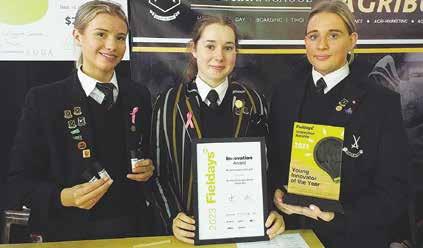
As part of the curriculum, the winning student group were placed in the top three of the school’s version of the Shark Tank TV series. The St Paul’s 2023 Crocodile Pit sees students put to the test to create a new agri-business product and service and learn the process of pitching innovation and business strategy.
CAPRA Skin, conceived, designed and manufactured by Lucy, Emma, Mackenzie and Lochie, is a specially formulated goat’s milk lip balm. Early in the process, the group realised that the core ingredient offered many natural benefits including vitamin A, fatty acids and moisturising agents, alongside the other main ingredients of kawakawa oil and bee venom which have cell regeneration qualities.
Looking at the broader reasons for developing the lip balm, the team recognised that many teenagers suffer from acne and use medication to clear up the problem. Unfortunately, a major side effect is drying out and eventually cracking of the lips. The youngsters looked at the current lip balm market and couldn’t find a lip balm that was targeted specifically targeted towards teenagers with dry and cracked lips.
From a development perspective and wanting to incorporate New Zealand ingredients, the group have decided to use kawakawa oil which is a native to New Zealand. The ingredient is non-greasy, helps heal skin conditions and seals wounds, while also restoring hydration, and reducing itching and redness.
On the marketing front, they decided to call the product Capra Skin, the name originating from the Latin word for goat, which in turn is a more recently used acronym for the greatest of all time (GOAT), which is the impression they want customers to feel after using the product.

family owned and leased land which they use for dairy support, mixed cropping, and lamb finishing. They employ 15 staff and operate a successful crop spraying business.
“We have grown very quickly over the last seven years from our original crop spraying

business to owning and leasing farms, so everything has moved really fast.
“Doing the IFP has cemented our thoughts on governance being a key focus area for us and it has given us the push to get on with it and to establish a clearer structure around roles and
responsibilities.
“We were able to look at who is responsible for each area of the farm business and make sure that we are clear on what that looks like.”
Reese says while every farm has different areas to work on after completing the plan, there are several common themes that have emerged.
“We have noticed that there are some gaps in the business and people areas. I think because farmers are practical people and are more focused on working in the business, it can be harder to find the time to work on the business.
“The IFP allows you to take a step back from your daily tasks and take a helicopter view to see if there are any gaps that need to be filled in. You get a clear picture of where the opportunities


are to grow your farming operation.”
All the farmers who participated in the project have provided positive feedback on the IFP process and Paul says the IFP template is now being used by a wider group of farmers.
“It’s been really well received, and I think it will continue to be used more widely to provide a deeper overview of how a farm business is operating and then giving farmers the support and help they need to make improvements.”
Gilchrist recommends that farmers give the IFP a go and says that while there are some searching conversations to be had, the overall outcome is extremely positive.
“Just take the ball and run with it. There will be nothing but good that comes out of it.”
ALREADY WELL known for innovative solutions in the dairy shed, Waikato Milking Systems gave us a glimpse into the future at the recent National Fieldays.
Their prototype ErgoPOD™ system is said to offer robotics-assisted milking that, unlike current robotic solutions, still retains a human presence in the shed.
Walking away with the coveted Prototype prize at the Fieldays Innovation Awards, the system is part of a 4-year research and development endeavour.
Aimed at both local and international markets, ErgoPOD™ is said to deliver a step change in milking that will rev-

olutionise the way teat cups are presented and managed in the dairy shed. Developed around the concepts of effective root-cause analysis, new ideas, design and simplification, the system is said to deliver just the right amount of automation while reducing injury risks associated with teat cup placement and cows entering and leaving a milking platform.
The system also provides opportunities for precise measurement and control of milk quality during harvesting, and will speed up the exit of a milked cow leaving a rotary platform.
The result will be a faster, safer process and that could be used by staff from a wider labour pool.
Receiving the Fieldays Innovation Award, WMS
executive chairman Jamie Mikkelson noted that when they started the project around four years ago, “we had a crazy idea that we were going to be the most admired dairy company globally for milking efficiency, if a single operator could milk up to a thousand
cows an hour”.
“That would certainly be a game changer. ErgoPOD™ means that we are well on the track to achieve that.”
Final development, including rigorous onfarm testing, will be completed over the next 18-months, ultimately
leading to a game changing market entry.
While the company is still a little guarded about specific product details, Dairy News understands that all the elements required to carry out the milking operation are housed in a pod (or POD) that sits on the
WOMEN IN the dairy sector are being empowered to successfully farm for the future thanks to a network of Business Groups and a far-reaching leadership programme it drives.
Set up by the Dairy Women’s Network (DWN), the Business Groups provide women dairy farmers with a forum to tackle challenges in their farming businesses, opportunity to learn together, question each other’s thinking and provide different perspectives and understanding, says chief executive Jules Benton.
“Through the Business Groups, women dairy farmers are being equipped to run thriving and sustainable farming businesses in a sector where there continues to be
rapid change and the comprehensive Farming for the Future Leadership Programme that the groups are embracing teaches skills and shares knowledge.”
She says the DWN, a nationwide organisation based in Hamilton, wants its farming members to be able to grow, adapt and change out of positivity, not because they are being driven by fear.

“Through the Business Groups and the Farming for the Future Programme our members can confidently build the skills, knowledge, experience and the networks to allow them to better manage current and future challenges so they can be successful no matter how the dairy
Bulls weighing your feed supply down? Across New Zealand, dairy farmers are switching to 100% AB, removing bulls from farm. With the benefits of CowManager, a slightly longer AB season becomes a breeze, and you can confidently say goodbye to retaining bulls on farm.
sector changes.”
Project lead Karen Bain says, the key lessons the programme offers include: how to develop and manage a strategic business; navigate change; build and retain effective teams; identify new opportunities to provide additional revenue streams; and increase engagement with important audiences including regulators and consumers.
An online knowledge hub is a onestop shop for participants to share information and insights as well as connect them with other rural networks.
Bain says the programme has been structured to be collaborative and agile, rather than being about pro-
floor of the milking bail.
As the animal enters the bail, the teat cups emerge from the POD, carried in a holster, from where the operator attaches them to the teats.
Pulsation commences when the teat cups are grabbed, then once milking is complete, cups are
cesses. “From the outset, we have wanted the focus to be application of skills and knowledge that make a difference – not just about ticking the boxes.”
Supporting Bain in rolling out the Farming for the Future Programme is Rose Young, who is in her early 20s and studying agribusiness.
Auckland city raised, Young’s first experience of dairy farming was when she was a pupil at Mount Albert Grammar and helped out on the school’s farm.
As part of her degree she is required to do work placements and says she fell on her feet when the DWN hired her to work on the programme through the Business
automatically removed and returned to the holster, where they are irradiated with UV light and sanitised for the next animal.
Removing currentlyused components like the milking claw, automatic cup removers and bail-mounted washing jetters creates a simplistic design, yet a wide range of complementary automation takes care of animal identification, data collection and drafting of animals that can’t be milked or need attention.
While cows will undoubtedly need training to adapt to the new format, the revolutionary concept is already attracting expressions of interest from overseas dairy producers, looking to learn more about the concept. Watch this space.
Group set up. A key focus for Rose is the Clifton Strengths Assessment that is embedded in the programme. This helps women in the Business Groups to understand what they are good at, providing them with coaching on their five key strengths to enable them to successfully lead and communicate, not only in their Business Group, but also on their farm and in their everyday family lives and their communities.
So far five Business Groups have been established with each one reflecting the personalities of members and their local area.
They are located in Te Awamutu, Putaruru, Rotorua, Northland and Gore.


FOR MANY North Island farmers, the wet weather just keeps on coming.
There seems be very little respite from rainy days and sodden pastures. Paddocks damaged by cows are common across the island and pasture covers are low on many farms. There is a lot of maize silage being fed already and with calving starting and the wet continuing, it looks like this level of feeding will continue into the spring.
Because of this, I am frequently being asked two questions…. how much maize silage can I feed my cows, and can I feed maize silage to calves?
How much maize can you feed cows?
Interestingly most of the world’s highest producing herds are fed diets based on maize silage and lucerne. In New Zealand, we usually have an abundance of pasture but in springs like this, that is not the case. Maize silage is an excellent feed to manage pastures when wet soils limit pasture growth rates and utilisation.
However, there are a few things to be aware of.
Watch dietary crude protein levels
The high crude protein (above 20%) content of pasture will be diluted by low crude protein (7-8%) maize silage. Taking this into consideration, farmers can still feed quite large amounts of maize silage without compromising milk production. Cows

require around 18% crude protein (CP) in early lactation. Assuming a cow is being fed 18 kgDM and pasture protein levels are 24%, a diet of 11 kgDM pasture and 7 kgDM maize silage will provide enough protein. You will need to decrease maize silage feeding rates if the diet contains other low protein feeds (e.g. grain, molasses, tapioca, brassica or fodder beet) or moderate protein feeds (e.g. PKE). One feedout or two?
Many farmers report that once cows have eaten more than 3-4 kgDM maize silage in a single feed, intakes slow, cows need a lot longer on the feed pad and this reduces grazing time. When soils are wet, this is a great way of reducing pasture damage as it means less time in the paddock. However, increased time on the pad can also increase the chance of sore feet or hips and animal welfare needs to be monitored.
Overfilling feed bins can increase the amount of feed being wasted. If you are feeding more than 4 kgDM per feed, consider splitting it in two.
Check mineral levels
Mineral supplementation may be required if you are
feeding a significant amount of the diet as maize silage. Use the following table as a guideline for milkers only. If you are feeding more than 40% of the diet as maize silage or something other than just maize silage and pasture, contact your farm advisor, veterinarian or animal nutritionist for a farm specific mineral recommendation.

Let pasture substitution work for you but know when to stop Substitution often has negative overtones as it has been associated with wasted feed and loss of pasture quality. However, a large feed deficit occurs, substitution can be a positive thing as it helps prevent overgrazing of pasture. The secret is to know when to reduce the maize silage feeding rate to prevent the loss of pasture quality. A simple rule is if cows are consistently leaving
residuals of more than 1800 kgDM, reduce the amount of maize silage being fed on the pad. Can I feed maize silage to my young stock?
The simple answer is yes. Many farmers are feeding maize silage to their young stock and are using it to help achieve target liveweights as laid out by DairyNZ1. These are as follows:
■ 30% of mature liveweight at 6 months of age, and 40% at 9 months
■ 60% of mature liveweight at 15 months (mating)
■ 90% of mature liveweight at 22 months.
However, it is vital that growing calves are fed enough protein to ensure they meet these target liveweights.
Young calves (100200kg liveweight) need 17% crude protein, while calves between 200300kg require 15% crude
protein. Heifers above 350kg need a minimum of 14% crude protein in their diet.
If you want to feed maize silage to your calves, test your pasture to determine its crude protein level and then make sure enough pasture is fed with the maize silage to meet the energy and protein needs of the calf.
In summary, maize silage is an excellent support for pasture based, dairy production systems. It is a great tool to manage pasture cover levels. To get the most out of your maize silage watch crude protein and mineral levels and if you are feeding high rates, feed it twice a day.
• Ian Williams is a Pioneer forage specialist. Contact him at iwilliams@genetic. co.nz
1DairyNZ 2023. Facts and Figures – A quick reference guide for New Zealand dairy farmers.
• Rolls up to 15m wide, therefore fewer joins which means less risk, faster installation and shorter good weather window required.
• Design assistance and volume calculations available.

• Material warranty from global company - Firestone Building Products.

• Nationwide Firestone trained and accredited installation contractors.
• Future proof - dependable performance, 50 year life expectancy even when exposed, 20 year Firestone material warranty
• Over 120 million square meters installed worldwide.
• 30 years in the NZ lining business.


AN INCREASING number of Otago and Canterbury dairy farmers are realising the value of DNA testing their calves to help them make better breeding decisions, according to local CRV sales consultant Deborah Adair-Dagg.
Originally from Scotland, Adair-Dagg started with CRV in August last year but has been living in South Canterbury/ Otago since 2018. Before arriving in New Zealand in 2004, Adair-Dagg earned her rural stripes on the family farm in

Scotland. Farming both pigs and beef, she developed a skill for herd improvement and became passionate about using genetics to boost production and profitability.
“I was always drawn to the animal improvement side of farming,” she says.
“There will always be an intuitive side to herd improvement, but the science of genetics puts a level of objectivity into it. That’s why I joined CRV in New Zealand.
“It’s evident that farmers in my region are start-

ing to take a different approach to fast tracking the genetic gain of their herds by DNA testing their calves.
“With DNA testing, farmers can confidently select the best replacement animals, allocate sexed semen to genetically superior cows, and increase the rate of genetic gain in their herd. DNA also makes calving much easier by matching calves back to dams. There is no need to mother calves in the paddocks, which saves time
STRONG FIRM FOOTING DURING TRANSPORT
HEAVY DUTY, FREE DRAINING MATTING MADE IN NZ FROM 100% RECYCLED RUBBER
Standard Sizes - 6’ x 4’ $280.00 + GST - 7’ x 5’ $405.00 + GST
MADE TO FIT YOUR TRAILER
OR CUSTOM MADE TO FIT YOUR TRAILER
ALTERNATIVE OPTIONS INCLUDE SOLID & OPEN WEAVE MATS
CALL US TO DISCUSS YOUR REQUIREMENTS
0800 80 85 70




WWW.BURGESSMATTING.CO.NZ

and money.”
The same ear tissue from a calf’s DNA test can be used for genomic testing, which is a more accurate method of predicting the performance of an animal and provides clearer insights.
“A genomic test is a deeper dive into the DNA,” explains AdairDagg. “With this test we can see the genetic markers that are responsible for specific traits within an animal. It adds an
extra layer of accuracy to predicting the perfor mance of an animal.”
By determining which calves are likely to be better producers, farmers can focus time, money, and staffing resource on growing those ani mals that will boost production numbers and increase the value of their herd. Deborah says farmers are often surprised that this type of forecasting is avail able.

spend that money on animals that have the traits your business needs. How do you know which ones to keep and which ones to sell? Genomic testing can give you the answers you need to make the best decisions.”
When it comes to assessing the performance merits of calves and heifers, Adair-Dagg knows that farmers often have a foot in two camps: what they can see with their eyes, and what the genetic data predicts. She understands.
“Farmers like to have good looking animals. For some, ugly animals are seen as potentially poor performers. I know where they’re coming from. I used to be a qualified sports therapist, so I know that a lot of good information can be gleaned from assessing the anatomical structure of a living thing.
“The most common phrase I hear is, ‘Wow! Can you really do that?’


As a breeding strategy, it makes complete sense. A farmer can quickly decide which animals to sell, and which ones to invest time and energy into, knowing these genetically superior calves will repay the investment with good production.”
As dairy farmers grapple with rising costs of production, many might see DNA and genomic testing as luxuries they can’t afford. However, Deborah believes testing is a wise business investment that pays for itself in the short term and can significantly boost profits over time.
“It costs about $1,800 to raise a heifer into the herd, so you only want to

“But often the visuals don’t tell the full story. That’s where genetic data and production figures come in. Hard data cuts through the subjective stuff and tells you how individual animals are likely to perform in the future or are performing now.”
Coming from Scotland, Deborah knows that genomic testing is a more common practice among European farmers. New Zealand is catching on, and DNA testing calves is an excellent way to get started.
“In Europe, farmers will often test the entire herd. They know there are big pays-off down the track. Some New Zealand farmers are fully on board, but most are a little hesitant.
“As calving nears, I am encouraging my farmers to DNA test their calves as a first step. The bottom line is you could be breeding in the dark without this kind of data.”
SUCCESSFUL CALF rearing starts as soon as the calf is born.
DairyNZ wants farmers to ensure that all calves are always cared for, including in the paddock and on their way to the calf sheds.
It also wants farmers to focus on safety and look after themselves.
“When moving cows and calves, stay safe and don’t turn your back on a newly calved cow.
“Even cows that are usually placid can become aggressive after calving. Keep the calf between you and the cow and don’t take any dogs or children into the calving paddock.
“When lifting calves, bend your knees and keep your back straight. Get assistance if needed.”

It’s important to record all births. Record the following: date, cow (dam) tag number, sex of the calf, alive or dead, calf identity/number, assisted or unassisted calving.
Check the system used on farm for matching cows and calves. If in doubt, checking the breeding information can help; is the cow due? When was the mating date? Does the breed match the bull/sire?

Temporary identification tags can be used for newborn calves in the paddock, like elastic neckbands with tags. Once back in the shed, proper tags can be put on in an environment that is clean and dry. If tagging in the paddock, ensure that the calf’s ear is clean, dry, and disinfected.
Look out for at-risk calves. Calves that had a difficult birth or that are born in poor weather are more likely to have trouble standing and suckling. Identify high risk calves as soon as possible, record their numbers, and bring them to the calf shed to get warm and have a good feed of colostrum.

To prevent navel infection, spray navels of newborn calves in the paddock and on arrival at the shed. Completely spray or dip the navel with iodine. Don’t use teat spray as the glycerine in teat spray can keep navels soft and moist.

Bringing calves from the paddock to the shed: good practice is to pick up newborn calves from the paddock twice daily to bring them to a warm, clean environment and ensure they get enough gold colostrum in the first

EIGHT THINGS calves need in order to be fit for transport:
■ Be at least four days old.
■ Be healthy, with no visible disease (e.g. scours), deformity, injury, blindness or disability.
■ Have bright eyes and upright ears.
■ Have the correct ear tag.
■ Be strong, able to rise from a lying position unassisted, move freely around the pen and bear weight on all four limbs.
■ Have firm hooves on which the soles show wear (indicating that they have been mobile).
■ Have a dry and withered navel.
■ Have a full tummy – no antibiotic milk.
hours of life.
The trailer used for picking up calves should be cleaned and disinfected regularly. To make transport safer for calves,
AstroTurf or another easily cleaned, non-slip material can be used in the bottom of the trailer. Don’t overload the trailer – there should be enough
Like natural whole milk, Ancalf ™’s high level of casein creates good curding properties which allow more time for nutrients to be released and digested. Ancalf ™ also provides milk fat, a source of butyrate, to aid with the development of young calves’ digestive systems.

So with Ancalf ™ they’ll take in more of what they need to help them reach their full potential.
Call our team for a quick chat about what’s best for the future of your herd. Or go to nzagbiz.co.nz for more answers to your calf rearing questions.
room so that all calves can lie down comfortably. Make two trips if there is not enough room. Calves move around easily so travel at walking pace. Check

HEIFERS THAT reach target weights make the most successful milking cows, so it’s important to invest in their health from the get-go to ensure a healthy, happy, and profitable dairy farm.
To raise and care for healthy calves, you must provide fresh, clean calf starter, milk replacer, and water on a regular basis. They need to be administered in a clean, warm environment to prevent infection and it is important that they receive all the right nutrients to help them grow strong.
There is no one perfect way to raise calves, but maintaining hygiene and health routines that work for your farm will provide consistent care for your calves and ensure they stay happy and healthy. SmartShelters calf rearing sheds are innovatively designed
specifically for high quality calf care.
How do you take care of calves?
As soon as a calf is born into the world, clean the nostrils and mouth to ensure their airways are clear, as this also prevents future breathing problems. Allowing the mother to lick the calf clean promotes circulation within their body and prepares the calf to stand up and walk. Tie the navel cord with a thread at a distance of around 2 inches from the base and cut the remaining cord with a clean instrument.
Provide water and feed for your calves at least twice a day. You can reduce urine and manure contamination by placing these outside the pen. This will also keep liquid feed and water from spilling on the calf’s bedding.
How can I improve my calf health?
Creating and implementing integral hygiene and health routines and best practices within your farm will ensure the health of your calves remains at its peak:
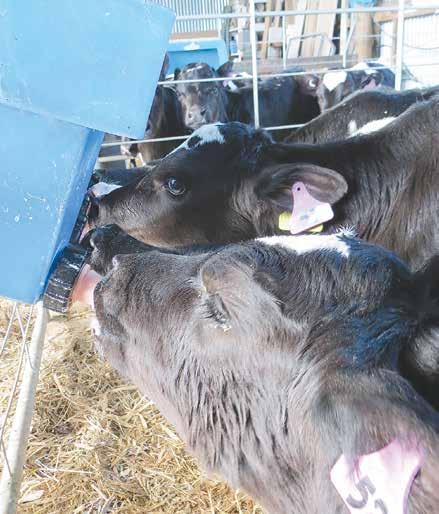
Scrub all feeding equipment well with hot water and detergent to prevent infections.
If any calves become sick, separate them from the healthy ones so as to prevent spread.
Frequently clean and disinfect pens where sick calves are treated. Disinfect hard surfaces.
Ensure bedding is kept clean and changed regularly.
Deworming should be done within 10-14 days old, then subsequently on a monthly basis up to 6 months old.
Calves can be vacci-
nated against the most threatening diseases at three months old.
What feed is best for calves?
From the get-go, colostrum is the most important source of nutrients for your calves. Colostrum is a special secretion released from mammary glands by mammals that have just given birth and before breast milk production begins. This milky fluid is an important element of a newborn calf’s diet as it helps develop their microbiome, which is immature at birth. It promotes growth and health in newborn animals, helps fight infections, and improve gut health throughout life. A newborn calf should consume two litres of colostrum within the first two hours of birth and between 1-2 litres (depending on the
size of the calf) within 12 hours of birth. It is recommended to hand-feed newborn calves to enable monitoring of how much colostrum an individual calf consumes.
After colostrum, a milk replacer is the primary source of food for the first few weeks of a calf’s life. Young calves cannot digest grains or hay yet, so find an agglomerated milk replacer whenever possible. This helps the young calf digest an even amount of nutritious substances. Here is an example of what to put in your calf starter feed to provide the best balance of nutrients: Maize-52%, Oats-20%, Soya bean meal-20%, Molasses-5%. How much feed should a calf eat per day?
Calves should be fed approximately 10% of their birth bodyweight a day. For example, a Holstein calf weighing 40 kilograms at birth would be fed 4 kilograms of milk a day, or 2 kilograms per feeding if fed twice a day. Small amounts of hay will complement the grain ration for these 8 to 12-week old animals
How to monitor calf health
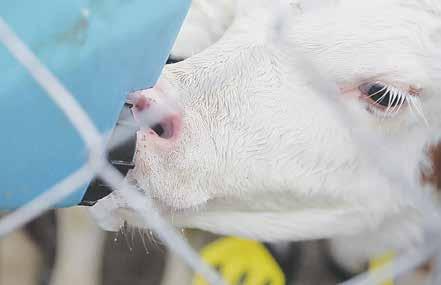
What works well on one farm may not be ideal for another. You should create and enforce a newborn protocol and calf care plan that remains consistent from day to day for consistency and appropriate monitoring. Proper management can greatly reduce the illness and death rates of calves.
Calf care
If you have healthy cattle that have a balanced and nutritious diet, they are more likely to birth healthy calves, and the cycle goes on. Calves will require the same level of sufficient nutrition for their growth and development.
If you’re worried about the health of your calves, look out for telltale symptoms so you can catch and treat any animal that may need extra care. A dull appearance with dry eyes and hair, decreased appetite, and tired or weak movements are among some of the usual signs your calves are not at peak health.
Calf Growth
To measure calf-raising success, you should use both survival and growth rates. Dairy replacement growth rates affect the time to puberty and ultimately affect the age of first freshening and lactation milk production.

If your calves are raised well, they will likely be ready to freshen between 22 and 24 months old.
To accurately measure calf growth through height, weight, and girth, you should calculate:
Average daily gain (ADG)
When animals become stressed, they are more likely to get sick. Other stressors include ear tagging, dehorning or disbudding, improper handling, or transporting. Seek the advice of a local veterinarian when working with your health plan.
Living Space
Recommendations for Calves
When considering the living spaces for calves, they need a draughtfree, warm environment with clean air and water, adequate feeding and drinking, space with dry bedding, and a regular excrement disposal system. In colder climates or seasons, their bedding may require additional material such as straw or wood shavings, cow-safe heaters, or even blankets if needed. You may also want to provide either indoor or outdoor areas away from other cows and animals.
SmartShelters calf rearing sheds are innovatively designed to provide a warm and safe environment for calves away from risk factors and extreme climatic conditions of the outdoors. Our unique hooped design encourages gentle air movement, keeping the shelter environment fresh and clean. They also help promote faster growth in calves, are more productive and fetch higher prices when they’re afforded the best conditions.
Weaning the calf
Whether you decide to partially or fully wean your calves may depend on factors within your farm. Most dairy farms have used the complete weaning technique to save their milk yields
for selling. This process involves the separation of cow and calf within 24 hours of giving birth and can cause major stress for both animals which results in unhealthy cattle that lose weight and produce less milk. In recent years, studies have shown that partial weaning, “fenceline” or “nose to
nose” weaning, allows the calves and their mothers to interact between a slatted fence. These cattle have proved to gain the optimal amount of weight and produce more milk due to lower stress levels.

COLOSTRUM IS produced only in the first milking after calving, it is higher in protein and fat than milk, contains a wide array of other beneficial bioactive molecules, specific nutrients, hormones and growth factors, and has a distinctive yellow colour.
Following the first milking a cow will produce ‘transition milk’ for a few days, which only has some of the characteristics of colostrum. Normal milk production will happen from about four days post-calving.

Colostrum is very energy and nutrient dense, which is helpful when feeding a very young calf with an immature digestive system.
Calves are born with a naive immune system and
have no resistance against bacteria and viruses that can cause disease.
Colostrum contains very high concentrations of immunoglobulins (defence proteins), and for the first 24 hours or so after birth a calf’s intestine is porous to these antibodies, allowing the calf to absorb them and transfer the immunity of the mother to the calf.
There is a rapid decline in the ability of the calf to absorb immunoglobulins after 12 hours of birth.
At around 24 hours of age the calf stops being able to absorb those immunoglobulins and this ‘gut closure’ is the reason it’s so critical to get colostrum into newborn calves (quantity, quality, quickly) immediately after collection from the calving areas.
Even after gut closure, colostrum has a protective effect, as immunoglobulins floating freely in the intestine can
bind to bugs to reduce their disease-causing ability to the calf.
It is important to note that the immunoglobulin concentration of colostrum coming out of a cow declines rapidly following first milking, and bacterial contamination levels can increase rapidly in colostrum that isn’t stored well. Therefore, feeding fresh, first milking colostrum or Jumpstart is advised for newborns.
Newborn calves should drink 15% (2.5-4 Litres) of their body weight in colostrum within the first 12 hours, but the sooner the better.
If a calf refused to drink colostrum at the first feed, try feeding colostrum after 3-4 hours or consider using a stomach tube to administer colostrum. Ideally newborn calves should continue to be fed colostrum/transition milk for the next 4 days after birth

CALVES ARE born with an underdeveloped digestive system.
Therefore, for the first four to six weeks of their life they exclusively rely on milk or milk-based feeds for nourishment before their digestive tract matures sufficiently to digest solid feeds.
Vat milk and good quality milk-based milk replacer provide high quality easily digestible nutrients to calves during the first 2 months of their life. Research has shown that increasing milk supply (ranging between 4-10 L/day) of either vat milk or milk replacer during the first 2 months of life promotes growth and is beneficial to the development of various organs (e.g. gut and mammary gland). Further, international studies have shown that accelerating pre-weaning growth through improving milk supply can promote greater lifetime milk production and studies in New Zealand have shown improved growth and thus reduced time to cull and environmental impact without compromising meat quality in dairy-beef heifers.
Therefore, feeding calves more milk (around 20% of their initial body weight, 6-10 L/day for calves with 25 to 50kg of initial body weight) during the first 2 months of life will not only improve growth and organ development of the calves but could potentially enhance the lifetime performance of the calves in commercial herds. It is highly recommended to feed calves consistently.
Changing the feeding time and abrupt changes in feed type (between vat milk and milk replacers) or volume fed can perturb the digestive system of the calves causing scours and/or metabolic disturbances that can affect calf health, growth and wellbeing. Maintaining cleanliness of the feeding equipment and the rearing environment (pens and milk preparation areas) is equally important for successful milk feeding and calf rearing programmes.
It is a good practice to clean and sanitize bottles, teats, mixing and storage equipment at every use to reduce pathogen loads.
• Article - DairyNZ
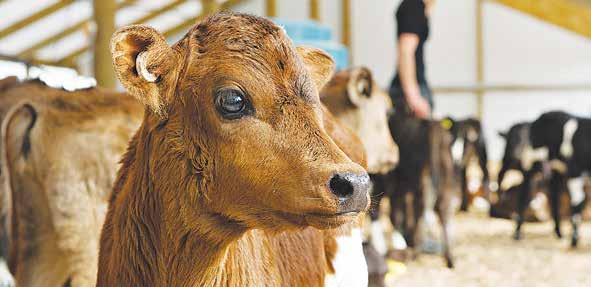
CALF REARING facilities should be set up and maintained well to ensure calves stay healthy.
Young calves should be housed for at least 4 weeks to ensure they stay warm and are using their energy for growth.
Housing
• Must be dry and draught free for calves to regulate body temperature. Calves should be protected from wind and rain in a structure twice as long as wide.
• Cover the floor surface with dry materials such as sawdust, shavings, straw, post peelings or wood chip to a depth of at least 200-300mm. Avoid dusty materials. Ideally the floor should be lower at the front to help drain effluent and water. Regularly muck out and top up the bedding so it is clean and dry.
• Good ventilation is essential and is best situated where the walls meet the ceiling. It’s easier to ventilate across the shed, not down the length. Ventilation should be adaptable, so the use of boards, shutters or wind cloth is recommended.
Spacing calves
• Calves are less stressed and have higher intakes in smaller groups. The shelter should provide a minimum of 1.5m2 per calf and, where possible, minimise calf contact between pens. The best approach is 10-20 calves per pen.
• Depending on how many calves you are rearing, having more than one shed separated into pens allows for easier separation of age groups and feeding levels. Having more pens also provides a safety barrier between calves in case of disease outbreak and will allow a pen/shed to
Young calves should be housed for at least four weeks to ensure they stay warm and are using their energy for growth.
be rested for cleaning and sanitation between different batches of calves.
Feeding facilities
• Each pen must have clean, quality water, which should be checked, cleaned and refreshed daily. In hot conditions, restricted feeding systems, high meal/ fibre intakes or scours, an additional 2-6L of water per calf per day is required.
• Meal troughs should have sufficient space for feeding at least half of the calves at the trough at any one time. Provide a minimum of 300mm of trough space per calf.
• Keep meal feeders free from moisture and clean weekly to avoid fungal growth
• Keep milk lines as short as possible and ensure there is no stale milk left in hoses between feeds.
Cleaning
• Ensure all feeding equipment is regularly cleaned and treated with disinfectant. Bottles or cafeterias should be cleaned between feeds and automatic feeders (mixing bowls, lines and teats) should be cleaned and calibrated at least weekly.
• Use a broom to remove any excess material in laneways. Do not use a high-pressure hose inside the shed, as this will aerosol bacteria and viruses to calves in other pens.
• Spray the rearing area, feeding utensils and teats with approved virucidal at least once a week and daily during a disease outbreak
• Rodents and birds must be controlled.
• Isolate sick calves to reduce risk of spreading disease.
• Ensure all calves are fitted with a NAIT tag before they reach 180 days of age.
• Register any fitted NAIT tags within 7 days of tagging.
• All calves must be tagged and registered before their first movement. So, if you are sending them off your location, make sure you meet your NAIT obligations.
• Calves must be NAIT tagged correctly.
For more information go to OSPRI.co.nz or 0800 842 463
IT WAS a case of doing the double when Morrinsville-headquartered Power Farming took out the Large Outdoor and Supreme Site awards at the 2023 Fieldays.

Located at the bottom of the Gate 2 hill, the blue and red site was hard to miss with an expansive product display, eye-catching signage and dapper-looking team.
2023 marked a significant milestone for Power Farming as they celebrate their 75th year in business.
The company has exhibited at Fieldays for 53 of those years.
To commemorate this achievement, the entire team adorned the original-style workwear worn by their predecessors, further emphasising the company’s rich history.
CEO Tom Ruddenklau said, “Tradition is impor-
tant to us, and hosting and celebrating our customer base with good old-fashioned, authentic hospitality was at the forefront of every decision made about the site
build”.
He noted that modern day technology, by way of the Fieldays App, helped their team members ready themselves for the arrival to site of
each of their 1000 ticketgifted guests, with checkin notification alerts as invited visitors entered the gate.
The judges’ assessment was based on Power
LEMKEN HAS introduced its new IC-Light+ camera control, which also detects the near-infrared range, for its Steketee hoeing machines.

The new camera control makes detection easier in crops with a high proportion of blue in the leaves, so offers a clear advantage in mechanical weed control,
in the cultivation of crops such as onions, leeks, broccoli or red cabbage.
Developed in-house, the standard IC-Light camera system fitted to Lemken Steketee hoeing machines captures the RGB colour range and reliably distinguishes between hues of green and red, while thanks to its self-
learning mode, the system continuously develops as it is being used.
The new IC-Light+ camera also captures hues of blue, allowing very young plants or plants with a particularly fine structure to be better identified and shown. As an example, the camera easily identifies onions the size of a pin
Farming going above and beyond the norm to provide an exceptional user experience for visitors to their site, taking in criteria such as overall attractiveness, innovative


site design, recognisable branding, and a clear focus on customer service.
David Natzke, coordinator of the Fieldays Site Awards, said,
“It was great to see that the entire site had been designed with the history and story of this third-generation family business and their loyal customer base”.
head.
The IC-Light+ camera is operated via the IC-Light terminal and allows hoeing as close as two centimetres from crop plants, at forward speeds of up to 15 km/h. The camera detects up to five rows of plants at a time and controls the steering of the hoeing machine between the rows.
KUBOTA NEW Zealand has recently launched its folding Land Pride RC57 and RC46 Series

Rotary Cutter range, further expanding its product offering for large scale and commercial customers.
The RC5715 is a new heavy-duty, 4.6m machine designed for commercial applications such as stubble mulching or contract slashing of roadways, while the RC4620 at a 6.1m working width, complements the broad line of folding cutters and is suited for wide area mowing such as airfields.
Kubota New Zealand product specialist Shaun Monteith says the rotary cutters have a range of features that show the brand’s expertise in developing rotary cutters for intensive users.
“The machines are
designed and manufactured in the US, then submitted to rigorous testing procedures. Both series deliver a high blade tip speed to ensure a highquality finish, while a 6” (15cm) blade overlap which eliminates ‘skips’ during turns. Both Series are available in 540rpm and 1000rpm PTO speeds, with an optional shredder kit ideal for breaking down crop residues,” he says.
A self-levelling performance hitch used on both models ensures a tight coupling with an exceptional range of movement, said to be ideal for uneven terrain and helping to reduce wear on the drawbar.
A narrow A-frame tongue also allows tight turns, for increased versatility.
Patented flip spacers on the RC57 Series allow quick adjustment of the cutting height and remove the need for more
AG CONTRACTING throws up many challenges, not least getting the job done, breakdowns, bad weather and finding suitable and committed staff.
At the same time, once the tractor is parked in the shed on completion of a job, contractors need to scrutinise time sheets and raise invoices for payment.
At Fieldays, UK-based Ag-drive launched a new paperless solution for agricultural contractors that should make the end of the day tasks just that bit easier.
The designer, third generation farmer/contractor and agricultural university graduate Will Dunn, wanted to solve the everyday challenges his father Simon faced in their family’s contracting business in Yorkshire, UK.
“From growing up working for the family contracting business and then coming home full time after university, I wanted to improve the running of the contracting business at home,” says Dunn, who started Ag-drive two years ago.
“At home, my old man used to spend hours trailing through job sheets every week, which seemed bizarre in an industry that operated high value machinery, yet in many cases was still invoicing based on notes written on the back of a cigarette packet.”
During the Covid-19 pandemic, with a little time on his hands, Will starting to develop the Ag-drive app and web portal.
Ag-drive is an all-in-one app for agricultural contractors that eliminates the need for paperwork by streamlining the process of job recording to invoicing with common accounting software packages like Xero, Sage online and Quickbooks. Other key features include live location tracking of operators, timesheets, field mapping, job reports, health, and safety checks as well as invoicing.
ity, while the RC46 Series offers a still impressive 3” (7.6cm) capacity.
object. This is a feature valued by commercial and intensive users.
indicat-


Deck Armor on the RC57 Series provides an additional layer of steel on the underside of the deck, helping to avoid deck damage from the blade, should the machine strike a foreign object, without compromising cut quality. The deck armour is a donut-shaped layer of steel that stops the main deck material from being compromised if the blade is bent after hitting an
A smooth deck top on both Series means reduced debris collection and easy cleaning between jobs, while the RC5715 has a unique, user-friendly sliding guard on the splitter gearbox improving access to the area for maintenance. Both Series offer a seven-year Limited Gearbox Warranty providing additional user confidence and peace of mind.
NEW SEASON PREMIERE FRIDAY 11 @ 9.30PM

THIS SEASON OF RURAL DELIVERY IS FOCUSSED ON THE EXCITING NEW DIRECTIONS OUR NEW ZEALAND LOCAL FOOD AND FIBRE PRODUCTION SECTORS ARE TAKING.

WE MEET PEOPLE AND ORGANISATIONS ACROSS OUR PRIMARY SECTORS WHO ARE WORKING HARD TO PROTECT AND PRESERVE THE ENVIRONMENTS THEY OPERATE AND LIVE IN, FOR THE SAKE OF ALL NEW ZEALANDERS.

PREMIERES SUNDAY 27 @ 8.30PM
GRAB YOUR HELMET AND HEAD FOR THE TRAIL!
IT’S ALL ABOUT ADVENTURE, THE OUTDOORS, AND THE WORLD OF RESPONSIBLE RIDING - FROM SAND DUNES TO MOUNTAIN PEAKS, CANYON RIDES TO MUD PITS, DESTINATION POLARIS IS YOUR AUTHORITY FOR ALL-TERRAIN TRAVEL.

JOIN HOSTS, JARED CHRISTIE AND ALEXA SCORE EACH WEEK AS THEY UNCOVER THE WORLD’S TOP RIDING DESTINATIONS. PLUS, PROJECT ‘X’ TURNS AN EVERYDAY MACHINE INTO THE BIGGEST, BADDEST, UTV VEHICLES ON THE MARKET.

Kubota says the rotary cutters have a range of features that show the brand’s expertise in developing rotary cutters for intensive users.
With over 2000 combinations across 78 basic types and 37 versions, BvL has a mixer wagon to suit every farming situation.
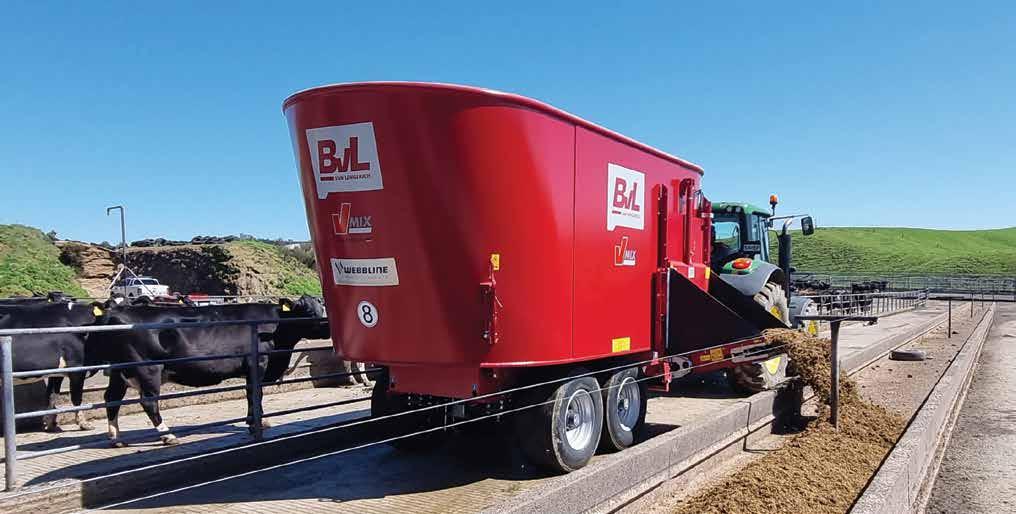
LEASE FROM 1869*
$ + GST PER MONTH
1: Fastest Mixing Speed
- Asymmetrical mixing wedges
- Power mixing auger
- Rolled mixing chamber walls
3: Nationwide Backup and Support

- Four branches nationwide
- Factory trained technicians
- Significant parts stock holding
2: Longest Lasting Mixer Wagon
- Double overlapped welding
- High quality German steel
- Robust truck style chassis
- Double anti spill ring
Scan the QR code to learn more about BvL Mixer Wagons

